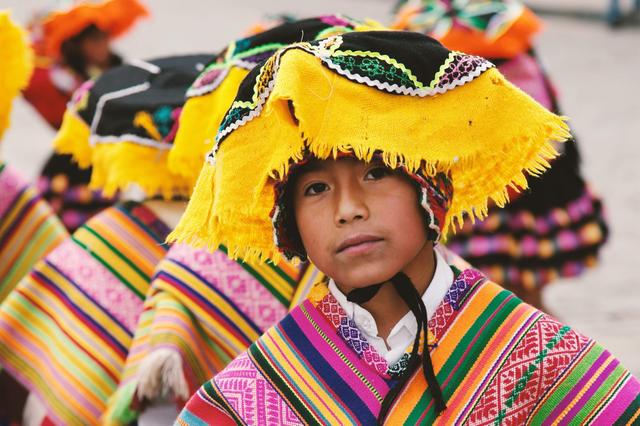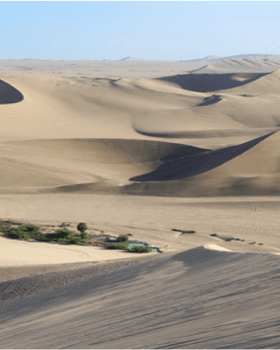

Mountains in South America
exploring south america's tallest mountainsSouth America is a land of unparalleled diversity, boasting some of the most breathtaking and tallest mountains in the world. Among its many treasures are the Andes Mountains. Spanning over 7,000 kilometers along the western edge of the continent, these peaks stretch from Colombia in the north to Chile in the south, offering a range of landscapes and experiences and making the region a playground for adventurers.
The Andes offer a mix of adrenaline and wonder, capturing the hearts of climbers and explorers alike. For centuries, the mountains in South America have shaped the lives of those who dwell near them, influencing traditions, culture, and spiritual practices.
As we explore some of the continent's most remarkable peaks, prepare to unlock the stories and adventures that these mountains hold.
Tallest Mountains in South America
Here is a ranked list of the tallest mountains in South America, organized from tallest to shortest. We will begin with the highest peak and proceed in descending order to the smallest among the tallest mountains on the continent.
Aconcagua: The Roof of the Americas
Height: 6,961 meters (22,837 feet)
Location: Mendoza Province, Argentina
Aconcagua in Argentina is the highest of the mountains in South America and the Western Hemisphere. This towering giant is part of the Andes mountain range and is a mecca for climbers worldwide.
The normal, northern route up Aconcagua is non-technical and does not require ropes, axes or pins. However, Aconcagua’s sheer altitude will test even seasoned mountaineers.
The peak was first summited in 1897 by Swiss climber Matthias Zurbriggen, and its name is believed to come from the Quechua word "Ackon Cahuak," meaning "Sentinel of Stone." The mountain is part of the Aconcagua Provincial Park, which offers a range of trekking routes and access points for climbers aiming to summit this iconic peak.
Ojos del Salado: The World’s Tallest Volcano
Height: 6,893 meters (22,615 feet)
Location: Chile-Argentina border
Ojos del Salado straddles the border of Chile and Argentina. Its name, which translates to "Eyes of the Salty One," is a nod to the region’s salt flats and mineral-rich landscapes, a surreal volcanic scenery that feels almost like another planet.
Not only is it the highest active volcano on Earth, but it is also one of the most remarkable features among the mountains in South America, holding significant scientific value.
The volcano’s fumaroles—small openings emitting gas and steam—continue to draw geologists and researchers interested in studying its activity. While the climb itself is non-technical, Ojos del Salado presents its own challenges, primarily due to its high altitude and extreme weather conditions.
Climbers often combine their ascent with visits to nearby salt flats and lagoons, making it a dream destination for adventure tourism in the mountains in South America.
Monte Pissis: A Hidden Gem
Height: 6,793 meters (22,287 feet)
Location: Atacama Desert, Chile
Nestled in the Atacama Desert, Monte Pissis reaches a staggering height of 6,793 meters (22,287 feet), making it the third-highest peak among the mountains in South America. Despite its prominence, it is one of the lesser-visited giants, offering tranquility and raw beauty.
The region, including mountains close to Monte Pissis, were considered sacred by the Incas, who created ceremonial platforms and sacrificial sites, underscoring the deep spiritual connection the indigenous people had with these towering summits.
Monte Pissis’s location set against a surreal desert backdrop dotted with turquoise lakes, creates a stark contrast to its icy summit.
Huascarán: The Pride of Peru
Height: 6,768 meters (22,205 feet)
Location: Cordillera Blanca, Peru
Huascarán dominates Peru’s Cordillera Blanca mountain range and stands out as one of the most iconic mountains in South America. As the highest peak in Peru, it’s a centerpiece for mountaineers and adventurers seeking both challenge and cultural immersion.
Huascarán is named after Huáscar, an Inca emperor who was a key figure during the empire's reign. The mountain lies within the Huascarán National Park, a UNESCO World Heritage Site, and is surrounded by one of the most biologically diverse areas in the Andes.
Climbers begin their expedition in the picturesque town of Huaraz, often referred to as the gateway to the Cordillera Blanca. The ascent is technical and demands proficiency in glacier travel, ice climbing, and high-altitude mountaineering.
Avalanches and crevasses add to the difficulty, requiring climbers to be highly experienced or accompanied by seasoned guides familiar with the terrain. On clear days, you can see far into the Amazon Basin to the east and the Pacific coastline to the west, making the climb worth every effort.
Cerro Bonete: The Overlooked Colossus
Height: 6,759 meters (22,175 feet)
Location: La Rioja Province, Argentina
CCerro Bonete in Argentina is often overshadowed by its neighbors, the more famous Aconcagua and Ojos del Salado peaks. Additionally, its remote location in Argentina’s La Rioja Province adds to the challenge of accessibility.
However, these very factors make it a hidden gem for those seeking a quieter, more intimate encounter with the Andes, one of the most remarkable mountains in South America.
Trekkers and climbers must be self-sufficient, as there is minimal infrastructure in the area and logistics need to be arranged well in advance, often requiring the assistance of local guides who are familiar with the terrain.
For those not aiming for the summit, the surrounding area is a paradise for high-altitude trekking. Overall, its barren, otherworldly landscapes and the absence of crowds provide a sense of untouched wilderness rarely found elsewhere.
Nevado Tres Cruces: The Triple Crown
Height: 6,748 meters (22,139 feet)
Location: Chile-Argentina border
Nevado Tres Cruces, on the border of Chile and Argentina, is the sixth highest of the mountains in South America and offers diverse trekking routes. It includes two prominent summits: Tres Cruces Sur (6,748 meters/22,139 feet) and Tres Cruces Centro (6,629 meters/21,749 feet) and its proximity to the Laguna Verde, a mineral-rich saltwater lagoon, adds an extra layer of beauty.
This "Triple Crown" of peaks, which also includes the less prominent Tres Cruces Norte, offers a thrilling and diverse climbing experience. Climbers often set up camp near the Laguna Verde, using its tranquil shores as a base for acclimatization hikes and to plan their route. The climb itself offers a mix of terrains, from rocky slopes to snowy ascents, challenging participants while rewarding them with amazing views.
The mountain resides within Nevado Tres Cruces National Park, making it a favorite for trekkers who love combining high-altitude climbing with scenic exploration and photography.
Llullaillaco: The Sacred Peak
Height: 6,739 meters (22,110 feet)
Location: Chile-Argentina border
Llullaillaco is home to one of the most extraordinary archaeological discoveries in history—the Llullaillaco mummies, also known as the "Children of Llullaillaco." In 1999, a team of archaeologists uncovered the remarkably well-preserved bodies of three Incan children—aged approximately 13, 7, and 6—buried in a ceremonial platform near the summit of one of the most stunning mountains in South America.
Climbing Llullaillaco is a significant achievement and requires strong mountaineering skills. The climb generally takes around 8-10 days, depending on the route and weather conditions.
Visiting the mountain offers a chance to experience the profound connection between the region’s natural beauty and its rich history, bridging the gap between past and present.
Andes Mountains in South America
The allure of the mountains in South America goes beyond their staggering heights—they are a source of endless fascination for both travelers and locals.
Climbing these peaks means immersing yourself in the natural and cultural canvas of South America. Indeed, the remnants of ancient civilizations are still visible across the landscape, with each summit telling its own unique story, waiting to be uncovered by those who dare to explore.
As you plan your next adventure or dream about new horizons, let the mountains in South America take you on a journey you wonʻt soon forget. The Andes, deeply a part of the region’s identity, offers a sense of awe and discovery that only these mountains can provide.

March - December
5 days / 4 nights

April - October
12 days / 11 nights

April - December
5 days / 4 nights

April - October
6 days / 5 nights






